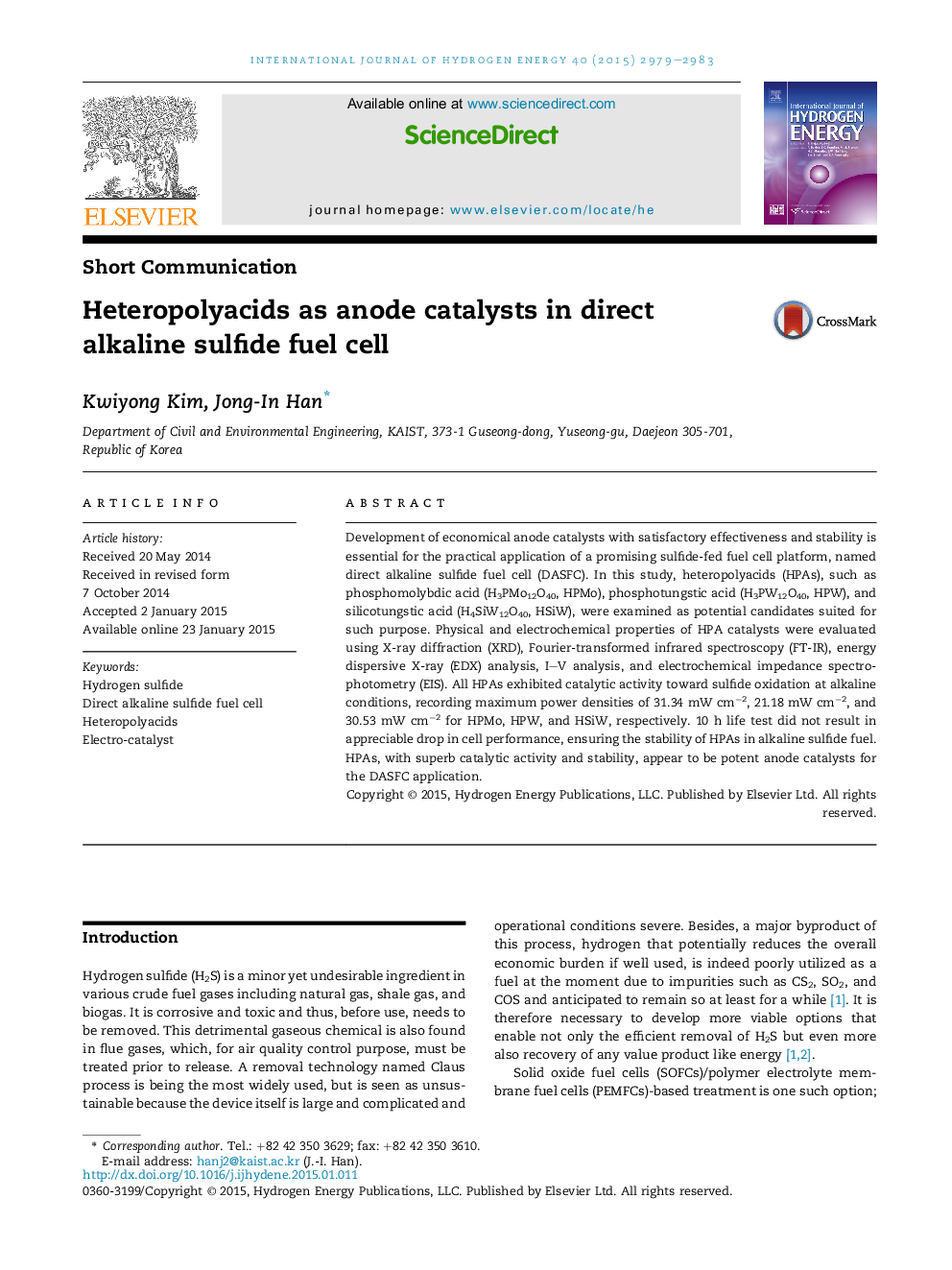| Article ID | Journal | Published Year | Pages | File Type |
|---|---|---|---|---|
| 7716135 | International Journal of Hydrogen Energy | 2015 | 5 Pages |
Abstract
Development of economical anode catalysts with satisfactory effectiveness and stability is essential for the practical application of a promising sulfide-fed fuel cell platform, named direct alkaline sulfide fuel cell (DASFC). In this study, heteropolyacids (HPAs), such as phosphomolybdic acid (H3PMo12O40, HPMo), phosphotungstic acid (H3PW12O40, HPW), and silicotungstic acid (H4SiW12O40, HSiW), were examined as potential candidates suited for such purpose. Physical and electrochemical properties of HPA catalysts were evaluated using X-ray diffraction (XRD), Fourier-transformed infrared spectroscopy (FT-IR), energy dispersive X-ray (EDX) analysis, I-V analysis, and electrochemical impedance spectrophotometry (EIS). All HPAs exhibited catalytic activity toward sulfide oxidation at alkaline conditions, recording maximum power densities of 31.34Â mWÂ cmâ2, 21.18Â mWÂ cmâ2, and 30.53Â mWÂ cmâ2 for HPMo, HPW, and HSiW, respectively. 10Â h life test did not result in appreciable drop in cell performance, ensuring the stability of HPAs in alkaline sulfide fuel. HPAs, with superb catalytic activity and stability, appear to be potent anode catalysts for the DASFC application.
Related Topics
Physical Sciences and Engineering
Chemistry
Electrochemistry
Authors
Kwiyong Kim, Jong-In Han,
